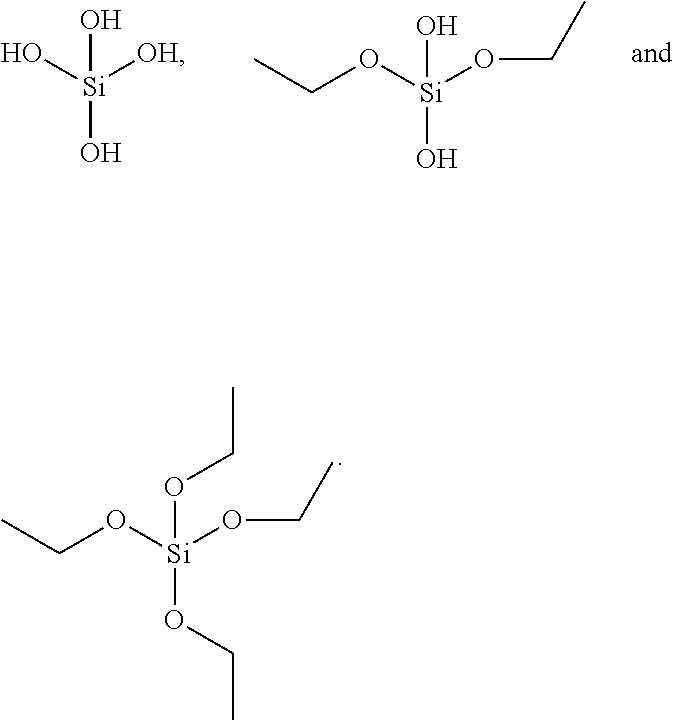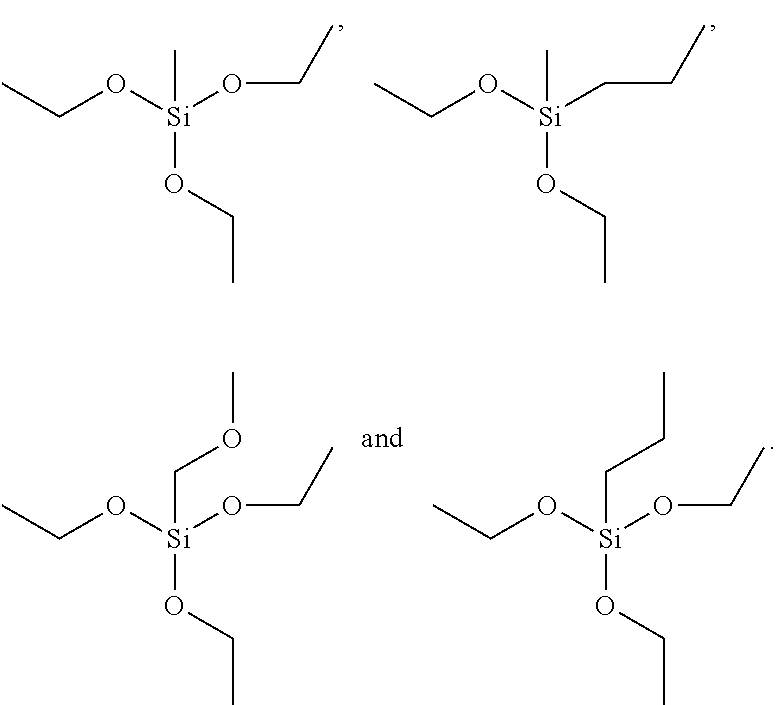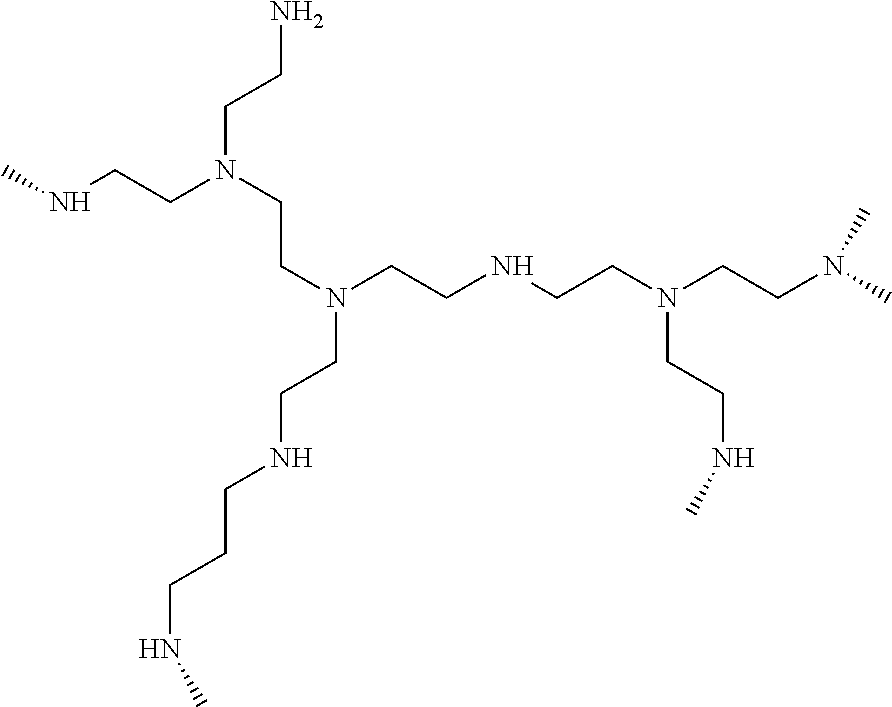Novel manganese comprising nanostructures
a nanostructure and manganese technology, applied in the field of chelating polymeric nanostructures, can solve the problems of mangafodipir off the market, affecting the quality of manganese, and limiting the contrast effect, so as to achieve cost advantages
- Summary
- Abstract
- Description
- Claims
- Application Information
AI Technical Summary
Benefits of technology
Problems solved by technology
Method used
Image
Examples
example 1
Synthesis of Synthesis of 1,1-bis(triethoxysilylpropyl)-1,1-bis(dimethylphosphonato)methane
1a: 1,1-diallyl-1,1-bis(dimethylphosphonato)methane
[0216]
[0217]A 2 L reactor fitted with a mechanical stirrer was dried out at 130° C. under vacuum and then allowed to cool under a positive nitrogen pressure. The reactor was charged with dry THF (1 l) (Aldrich dry, 99.9% with 250 ppm BHT) by tube transfer under inert gas. Tetramethylmethylenedi(phosphonate) (97.4 g, 420 mmol) and allyl bromide (183 ml, 255 g, 2.11 mol) were added (no heat evolved, no acidic gas detected). Jacket temperature was set to 0° C. and at an inner temperature of 6° C., was added (split in 6 portions) potassium t-butoxide (140.3 g in total, 1.25 mol). The temperature rose to about 12° C. after each addition and was allowed to go back to 6° C. (or lower) before the next addition. A last addition of allyl bromide (9.4 ml, 0.11 mol) and t-butoxide (7.3 g, 65 mmol) was performed to convert the last few percent of monoallyl...
example 2
Synthesis of 1,1-bis(2-trimethoxysilylethyl)-1,1-bis(dimethylphosphonato)methane
2a: 1,1-bis(2-t-butoxyethyl)-1,1-bis(dimethylphosphonato)methane
[0224]
[0225]To an ice cooled solution of 1,1-bis(dimethyl)phosphonato)methane (50 g, 215 mmol) in dry THF (500 ml) under nitrogen is added sodium hydride (18.9 g, 60% in mineral oil, 474 mmol) in three portions, over 30 minutes. The mixture is stirred for 3 hours and then 1-bromo-2-t-butoxyethane (90.5 g, 500 mmol) is added in 5 ml portions. The ice bath is removed after three hours and stirring continued at room temperature for overnight. The reaction mixture is cooled with an ice bath again and quenched by the addition of 50 ml saturated aqueous ammonium chloride. The volatiles are removed in vacuo and the organics are dissolved in dichlormethane (300 ml). Silica (100 g) is stirred in and the slurry is filtered and the filter cake is washed with 3×200 ml dichloromethane. The product is obtained after removal of the solvents.
2b: 1,1-bis(2-h...
example 3
Synthesis of 1,1-bis(trimethoxysilylmethyl)-1,1-bis(dimethylphosphonato)methane
[0234]
[0235]To an ice cooled solution of 1,1-bis(dimethyl)phosphonato)methane (50 g, 215 mmol) in dry THF (500 ml) under nitrogen is added sodium hydride (18.9 g, 60% in mineral oil, 474 mmol) in three portions, over 30 minutes. The mixture is stirred for 3 hours and then chloromethyltriethoxysilane (500 mmol) is added in portions, maintaining the inner temperature below 5° C. The ice bath is removed after three hours and stirring continued at room temperature for overnight. The reaction mixture is cooled with an ice bath again and quenched by the addition of 50 ml saturated aqueous ammonium chloride. The volatiles are removed in vacuo and the organics are dissolved in dichlormethane (300 ml). Silica (100 g) is stirred in and the slurry is filtered and the filter cake is washed with 3×200 ml dichloromethane. The product is obtained after removal of the solvents.
PUM
| Property | Measurement | Unit |
|---|---|---|
| Hydrodynamic diameter | aaaaa | aaaaa |
| Hydrodynamic diameter | aaaaa | aaaaa |
| Molar ratio | aaaaa | aaaaa |
Abstract
Description
Claims
Application Information
 Login to View More
Login to View More - R&D
- Intellectual Property
- Life Sciences
- Materials
- Tech Scout
- Unparalleled Data Quality
- Higher Quality Content
- 60% Fewer Hallucinations
Browse by: Latest US Patents, China's latest patents, Technical Efficacy Thesaurus, Application Domain, Technology Topic, Popular Technical Reports.
© 2025 PatSnap. All rights reserved.Legal|Privacy policy|Modern Slavery Act Transparency Statement|Sitemap|About US| Contact US: help@patsnap.com



